Anita FONTAINE
 http://anitafontaine.com http://anitafontaine.com
Anita Fontaine’s fantastical modifications, media interventions and new media explorations radically repurpose contemporary technology to surprising new ends. Her aesthetic can best be described as a technical virtuosity and creativity in mastering the digital idioms of our contemporary visual landscape, infused with a rebellious sense of play and a taste for magic.
Interestingly, Fontaine’s materials are unexpected; rather than the plein air paintings of past, her work is fashioned from commercial, readily accessible platforms; typically entertainment technologies of our day. Some of her tools of the trade include the video game Unreal Tournament 3—which employs physics engines designed to predict the effects of Newtonian law—the virtual space of second life; or mobile phone technology and GPS. From these diverse contemporary technologies,
Fontaine fashions new realms, coaxing these mundane technologies into vibrant expressions in the realms of the unreal. The resultant visual iconography includes vibrant, hyper-colored Harlequin lands marked by a sense of hyperrealism, yet characteristic fancy. Referencing the wonder and potentiality of classic fairy tales, Fontaine instead invents new idioms, drawing on the contemporary digital/visual landscape to spin her mythologies within the grand Metaverse.
Fontaine’s work affectively bridges the divide between the long-held distinctions between reality and artifice, imagined and real-world dreams, virtual and actual territories. Her works flit between worlds, in a liminal space, showing that reality is not a singular entity, but can at once be limitless and manifold. Her explorations into new technologies are radical, free spirited and on the brink of innovation; yet they are also fundamentally situated within the classic Western humanist tradition of exploring mimesis through virtuosic displays of verisimilitude. Firmly rooted in the impossibly infinite potentiality of new expression, Fontaine weaves a beautifully fabricated tapestry that inspires us to look beyond our immediate façade to new, wondrous worlds.
Anita Fontaine was born in Australia and currently lives & works in Amsterdam, the Netherlands. Her fine art aesthetic is informed by a constant engagement with the creative community, pushing the boundaries of innovative expression. She is the Co-founder of the design studio Champagne Valentine, whose award-winning work in motion, gaming, interactive and mobile have made her and partner Geoff Lillemon darlings of the new media design world. Anita Fontaine’s work has been exhibited internationally at a number of galleries and museums, including, Ars Nova museum in Finland, Gallery of Modern Art, Australia, FACT Liverpool, and the NIMK in Amsterdam.
Daniel CROOKS
http://www.danielcrooks.com
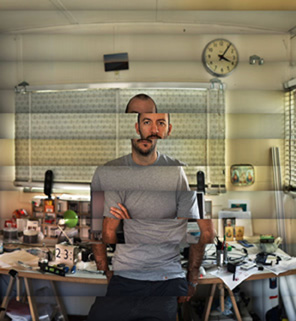 Practicing across a range of time–based media including video, photography and installation Daniel Crooks’ work has been widely exhibited both in Australia and internationally. In 2008, a major solo show, everywhere instantly was held at the Christchurch Art Gallery, Te Puna o Waiwhetu and also in 2008 Intersection at Anna Schwartz Gallery, Melbourne. Recent group shows include the 17th Biennale of Sydney, The Anne Landa Award at the Art Gallery of New South Wales, Sydney, Wonderful World at the Samstag Museum of Art, Adelaide and Figuring Landscapes at the Tate Modern, London 2008. Practicing across a range of time–based media including video, photography and installation Daniel Crooks’ work has been widely exhibited both in Australia and internationally. In 2008, a major solo show, everywhere instantly was held at the Christchurch Art Gallery, Te Puna o Waiwhetu and also in 2008 Intersection at Anna Schwartz Gallery, Melbourne. Recent group shows include the 17th Biennale of Sydney, The Anne Landa Award at the Art Gallery of New South Wales, Sydney, Wonderful World at the Samstag Museum of Art, Adelaide and Figuring Landscapes at the Tate Modern, London 2008.
A graduate of the VCA School of Film and Television, Crooks’ graduate film screened at numerous international film festivals winning the City of Stuttgart Prize for Animation and an Australian Short Film Award. In the 2008 he was awarded the inaugural Basil Sellers Prize. In 1997 He received an Australia Council Art and Technology Fellowship and between 2004 and 2005 undertook residencies at the Rijksakademie van Beeldende Kunsten in Amsterdam and the London studio of the Australia Council.
Biography
1973 Born Hastings, New Zealand
1993 Bachelor of Design, Auckland Institute of Technology, Auckland, NZ
1994 Post Graduate Diploma of Animation, Victorian College of the Arts School of Film and TV, Melbourne
2001-02 Lecturer, RMIT and Monash Universities, Melbourne
2002-09 Motion Graphics Designer, Australian Centre for the Moving Image (ACMI), Melbourne
Selected Solo Shows
2010 Daniel Crooks, Anna Schwartz Gallery, Melbourne Art Fair
2008 Everywhere Instantly, Christchurch Art Gallery, Christchurch, New Zealand
Daniel Crooks and Jae Hoon Lee, Institute of Modern Art, Brisbane
2007 one step forwards, one frame backwards, Sherman Galleries, Sydney
2006 Daniel Crooks, REMO, Osaka, Japan
Selected Group Shows
2010 17th Biennale of Sydney; The Beauty of Distance, Cockatoo Island, Sydney
Cubism & Australian Art, Heide museum of art, Melbourne
2008 Basil Sellers Art Prize, Ian Potter Museum of Art, Melbourne
2006 Wavefront - Australian Contemporary Art Scene. Tokyo Wondersite, Shibuya, Japan
Anne Landa Award, Art Gallery of New South Wales, Sydney
Selected Residencies
2005 London Studio Residency, Australia Council Visual Arts and Crafts Board
2004–05 Guest Resident, Rijkasakdemie van Beeldende Kunsten, Amsterdam
1997 RMIT New Media Arts Residency, Australia Council New Media Arts Board
Selected Awards
2008 Inaugural Basil Sellers Art Prize, Ian Potter Museum of Art, Melbourne University
Peoples Choice Award, Basil Sellers Art Prize, Ian Potter Museum of Art, Melbourne University
1996 City of Stuttgart Prize for Animation, Stuttgart International Festival of Animated Film, Germany
Dendy Australian Short Film Award, Sydney International Film Festival
International Award for Video Art Finalist, Germany
Warwick THORNTON
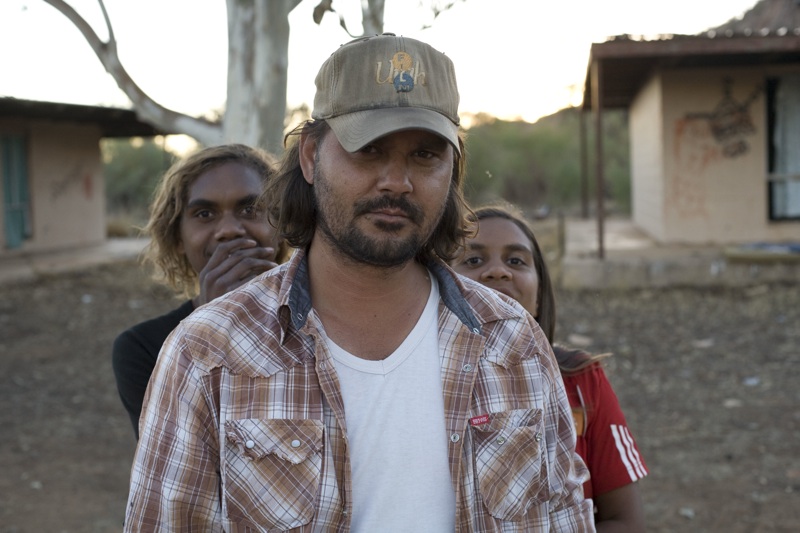 http://www.samsonanddelilah.com.au http://www.samsonanddelilah.com.au
Image: Warwick THORNTON with Marissa Gibson (Delilah) and Rowan MacNamara (Samson) 2009
Warwick Thornton is one of Australia’s most promising contemporary filmmakers, winning numerous domestic and international awards as a cinematographer, writer and director. A powerful representative voice for indigenous themes, Thornton’s insightful camera reveals stories resilient with spirit.
Thornton comes from the Katej people of central Australia and has lived in nearby Alice Springs all his life, apart from a three-year stint at the Sydney- based Australian Film, Television and Radio School (AFTRS) where he studied cinematography, graduating in 1997.
Thornton honed his media skills at the Central Australian Media Association of Australia (CAAMA), which encourages members of indigenous communities to be involved in the production of their own film, television and radio.
His passion has always been to document the stories of his community – for them and about them, and share them on a big screen. “There’s no point writing unless you’ve got something to say and a fire burning in you,“ he says.
That ‘fire’ has fuelled a recent wave of dynamic and inspiring aboriginal stories, developed and supported by government initiatives through the Indigenous branch of Screen Australia (the former Australian Film Commission).
Thornton was a product of the first series in 1995/6, From Sand to Celluloid.”I’ve seen it all happen and it’s come a long way. There are some incredible writers and directors out there now because of these developments,” he says.
Thornton’s impressive short film track record always augured a promising career. His first short, Payback (1996, 6 min), about the indigenous traditional law system, was invited to the prestigious Telluride Film Festival. Short comedy Mimi (2002, 12 mins) is a clever satire of the indigenous art industry starring Sophie Lee (The Castle). Green Bush (2005, 26 min), is based on Thornton’s personal experience as an indigenous radio DJ’s attempting to juggle spinning music and negotiating the nightly dramas at a remote community radio station.
Award winning Nana (2007), a story of outback courage, look at family ties through the eyes of a young girl on the edge of adulthood, took out the Crystal Bear award, as the best short at the Berlin Film Festival where each of his shorts has won an award.
The ideas for his highly anticipated debut, Samson and Delilah took about two years to ferment but only one week to write. The tale of outback love and tragedy is set in an isolated community in central Australia’s Simpson Desert. Thornton describes it as “an unconventional and understated love, borne out of necessity, that develops out of survival with the growth of trust between what society sees as 'two untouchables'.”
The Cannes invitation and win is the culmination of his career. "I’ve been making films for twenty years and this has always been my dream," said Thornton, "but even in my wildest dreams I never thought it would happen. It is SO cool.."
Peter MILLER
http://www.perpetualocean.com
Peter Miller is an Australian music composer, sound-designer and digital image artist.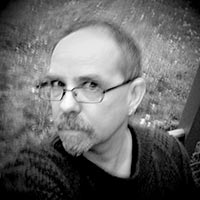
Along with director Alex Proyas (director of I Robot, The Crow, Dark City), Peter was one of the
founding members of the acclaimed Australian film production company Meaningful Eye Contact,
known and respected internationally for the creation of innovative music videos, films and
commercials.
Over the past twenty years Peter has created numerous musical and soundscape works including
The Violet Flame, Houdini and Love Vs Gravity. The Sydney Morning Herald said of his most
recent musical project, the 6 CD atmospheric magnum opus Strangeness & Charm, that: “In this
remarkable work, Peter Miller has explored that wonderful musical world of the quiet, the
understated, the delicate and the beautiful... the listener enters an ethereal world full of filigrees
and seductive repetition that hovers somewhere between Brian Eno and Philip Glass...”
In addition to his standalone musical works, Peter composes music and creates soundscapes for
film and television. His recent sound design for the hugely successful DreamWorks film The Ring
has helped keep many millions of cinema-goers on the edge of their seats. He has also composed
music and created sound design for theatre and art installations.
Peter's visual work has gathered much critical approval. His exhibition of mathematically created
dark organic still images, biologika, was admired by DG Design & Creative Culture magazine for
its “secret beauty hidden within numbers” and The Australian newspaper applauded the works as
"deeply geeky and strangely appealing". Science fiction writer Bruce Sterling personally chose
Peter’s iterative image Red Portal for the cover of his 2008 anthology Ascendancies.
The Sanlitun exhibition of Microspore is the premiere of this animation in a public space, and the
work has been re-designed specially for the Sanlitun screen. Microspore also features Peter’s
original music.
Jess MACNEIL
 http://jessmacneil.com/ http://jessmacneil.com/
Jess MacNeil works at the points of intersection between painting, installation, video and photography, often taking as her subject matter the dynamics of the human/environment relationship.
Preoccupied with the lingering traces of human passage through time and particular places, MacNeil’s works invite consideration of the complex pre-conditions and subtle repercussions of our encounters. Her paintings and video works explore the visible and invisible influences that govern the way we perceive and inhabit the world, presenting an emphatically subjective visual translation of the amorphous 'shape' of our relationship to our surroundings and to one another.
Water is a continual point of reference as MacNeil is interested in its innate movement, distortion of light and ambiguity of image as representative of our relationship with our environment. Water closes the schism between modern man's notion of separation from nature and our actual living environment; we are water. Her subtle manipulations of digital video footage preserve the memory of something which is constantly erasing itself, and act as a homage to something precious though fleeting, and our state of flux within our environment.
MacNeil has exhibited widely internationally and within Australia. Her work was included in ‘Primavera’ at the Museum of Contemporary Art, Sydney and the Samstag Museum of Art in 2008 and was presented at the Tokyo Metropolitan Museum of Photography, the Museum of Contemporary Art, San Diego, and the Museum of Contemporary Art, Sydney, in 2009.
She was awarded the Anne & Gordon Samstag Scholarship, the Fauvette Louriero Memorial Artists Travel Scholarship, and an Australia Council Grant in 2006 and completed a Graduate Affiliate Program at the Slade School, London in 2008.
Her work is held in public collections including the Museum of Contemporary Art, Sydney, and the Australia Council for the Arts as well as numerous Australian and international private collections.
Jess MacNeil lives and works between London, United Kingdom, and Sydney, Australia.
Troy INNOCENT
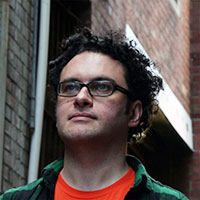 http://troyinnocent.net http://troyinnocent.net
Dr Troy Innocent is a world builder, iconographer and reality newbie. Since 1989, he has been constructing languages and evolving artificial worlds. He has received numerous awards, including Honorary Mention, LIFE 2.0: Artificial Life, Spain (1999); Foreign Title Award, MMCA Multimedia Grand Prix, Japan (1998); and Honorary Mention, Prix Ars Electronica (1992). Innocent is currently Senior Lecturer in the Faculty of Art & Design at Monash University, Melbourne.
Innocent has been exploring new aesthetics enabled by computers since 1989. Deconstructing and understanding the endemic properties, language and nature of the digital realm has been the underlying theme of his work. Trained as a designer and practising as an artist, he has moved across media in works involving digital games, generative systems, artificial life, computer animation, installation, interactive media, synthetic images and sound. His work has been exhibited widely at national and international galleries, conferences, and symposia, including Ars Electronica in 2004.
Typically, these works involve the construction of artificial worlds that explore the ‘language of computers’. His media arts practice explores the connections between artificial systems such as language and natural processes abundant in life. In this work, Innocent explores the dynamic between the iconic ideal and the personal specific, the real and the simulated, and the way in which our identity is shaped by our language and communication.
The languages evolved and constructed for these works became the focus of his PhD thesis on the poetics of digital media: a model for interaction, representation, structure and algorithm articulated via a system for human-computer expression.
Innocent recently completed a residency at Tokyo Wonder Site that investigating urban art environments and locative media projects that respond to the urban spaces of Tokyo. Other recent works include Semiomorph (ISEA02, Nagoya, Japan), Iconica; trans’forms (Tolarno Galleries, Melbourne, Australia), lifeSigns: eco-system of signs and symbols (2004: Australian Culture Now, ACMI, Melbourne, Australia), and Scenes from Ludea (SIGGRAPH2006, Boston, USA).
His most recent major work is a commission for the Digital Harbour precinct within Melbourne’s Docklands entitled Colony. Innocent has developed a public art practice that uses materials and motifs that draw upon the language of the contemporary urban landscape that aims to integrate art into the environment itself. Typically augmented by electronic light and sound, his urban art environments are inspired by themes of play and participation that invite the audience to become part of the work through interaction.
Kate RICHARDS
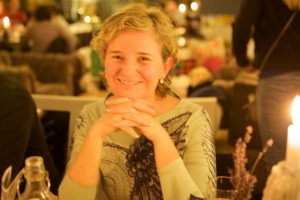 http://katerichards.net/ http://katerichards.net/
Kate Richards is a Sydney-based media artist with an undergraduate degree in BA Communications from UTS (1980), and a Masters in Fine Art in New Media Research from the University of NSW (CoFA) 1st class honours in 1996.
Kate works across multimedia, interactivity, visualisation software and time-based media and is exhibiting artworks both nationally and internationally. Recent multimedia exhibitions include the Life After Wartime suite with Ross Gibson, the most recent outcome being the 5 channel interactive media installation Bystander (funded by the Australian Research Council and The Nelson Meers Foundation) exhibited at The Performance Space@Carriage Works in August 2007 plus other CDROMS, live performance and a print exhibition exhibited since 1999; Wayfarer, a series of locative art events with Martyn Coutts held at The Performance Space@Carriage Works in September 2007(funded by the InterArts and Theatre Board Australia Council) and The Arts Centre, Melbourne; The Uncertainty Principle, a photographic exhibition at the Australian Centre for Photography in Oct 2007 and new video installation exhibited Belfast 2009
CHUNKY MOVE
http://www.chunkymove.com
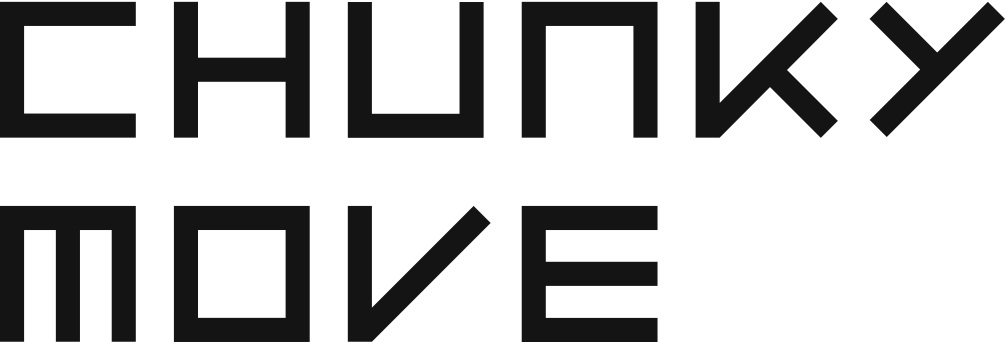
Founded by Artistic Director Gideon Obarzanek in 1995, Chunky Move has earned an enviable reputation for producing a distinct yet unpredictable brand of genre-defying dance performance. Chunky Move’s work constantly seeks to redefine what is or what can be contemporary dance within an ever-evolving Australian culture. The Company’s work is both diverse in form and content; to date the Company has created a number of works for the stage, site specific and new-media and installation work.
Chunky Move’s multitiered programming initiatives foster and support a strong and vibrant dance culture in its home city of Melbourne and also creates critically acclaimed and popular larger productions for touring. Recent international engagements include: Edinburgh, Mexico City, Dusseldorf, Spain, Philadelphia, Berlin, Toronto and New York. In 2008 Chunky Move received Best Dance Work for GLOW and Best Visual or Physical Theatre Production for Mortal Engine at the Live Performance Australia Helpmann Awards. In 2009, Mortal Engine received an Honourable Mention in the Prix Ars Electronica Awards in the Hybrid Arts category. Recent works include: Two Faced Bastard, Mortal Engine and GLOW.
“Chunky Move is miles ahead of any other major dance company in Australia.” The Sunday Age
|

 Practicing across a range of time–based media including video, photography and installation Daniel Crooks’ work has been widely exhibited both in Australia and internationally. In 2008, a major solo show, everywhere instantly was held at the Christchurch Art Gallery, Te Puna o Waiwhetu and also in 2008 Intersection at Anna Schwartz Gallery, Melbourne. Recent group shows include the 17th Biennale of Sydney, The Anne Landa Award at the Art Gallery of New South Wales, Sydney, Wonderful World at the Samstag Museum of Art, Adelaide and Figuring Landscapes at the Tate Modern, London 2008.
Practicing across a range of time–based media including video, photography and installation Daniel Crooks’ work has been widely exhibited both in Australia and internationally. In 2008, a major solo show, everywhere instantly was held at the Christchurch Art Gallery, Te Puna o Waiwhetu and also in 2008 Intersection at Anna Schwartz Gallery, Melbourne. Recent group shows include the 17th Biennale of Sydney, The Anne Landa Award at the Art Gallery of New South Wales, Sydney, Wonderful World at the Samstag Museum of Art, Adelaide and Figuring Landscapes at the Tate Modern, London 2008.




